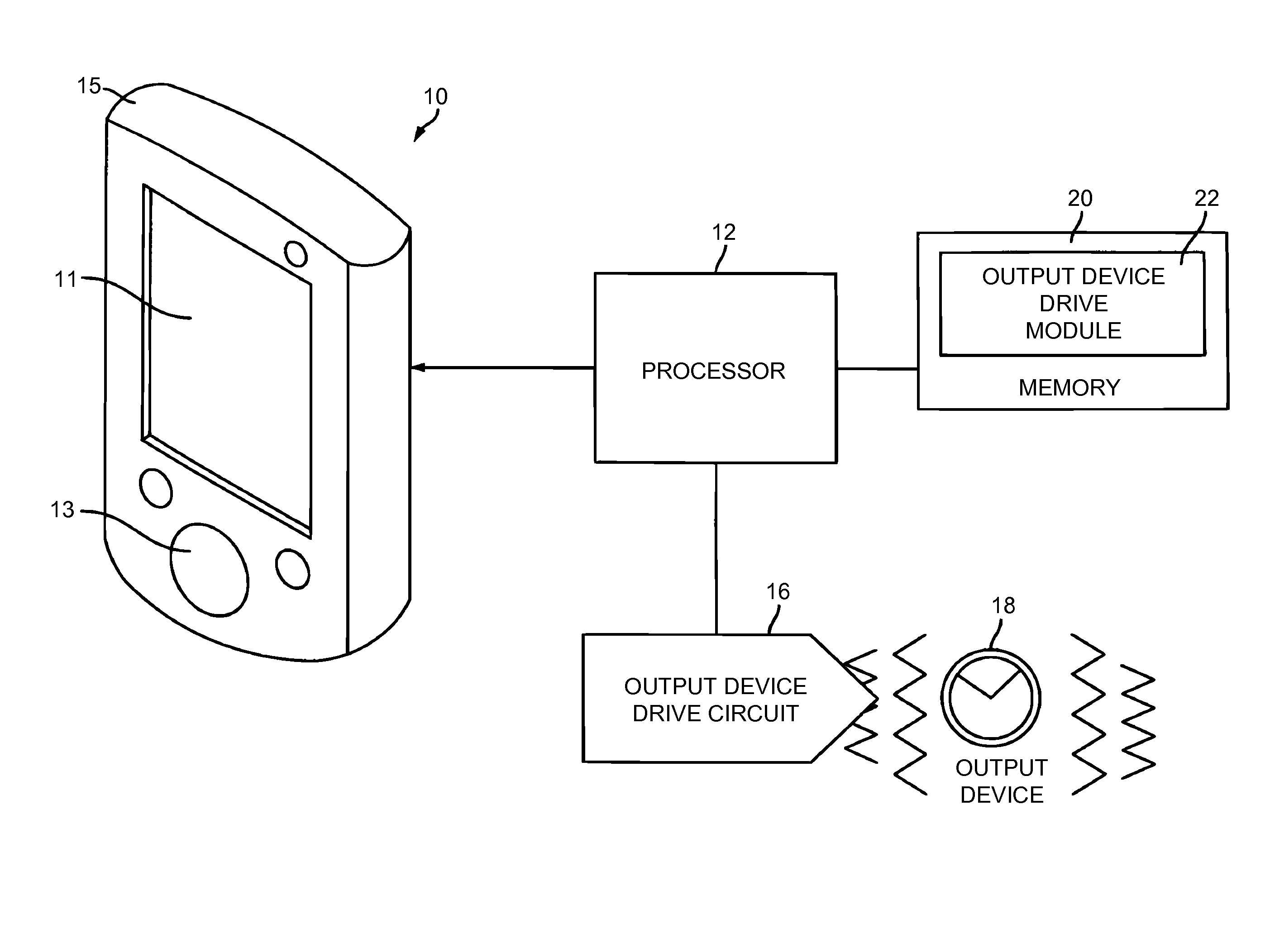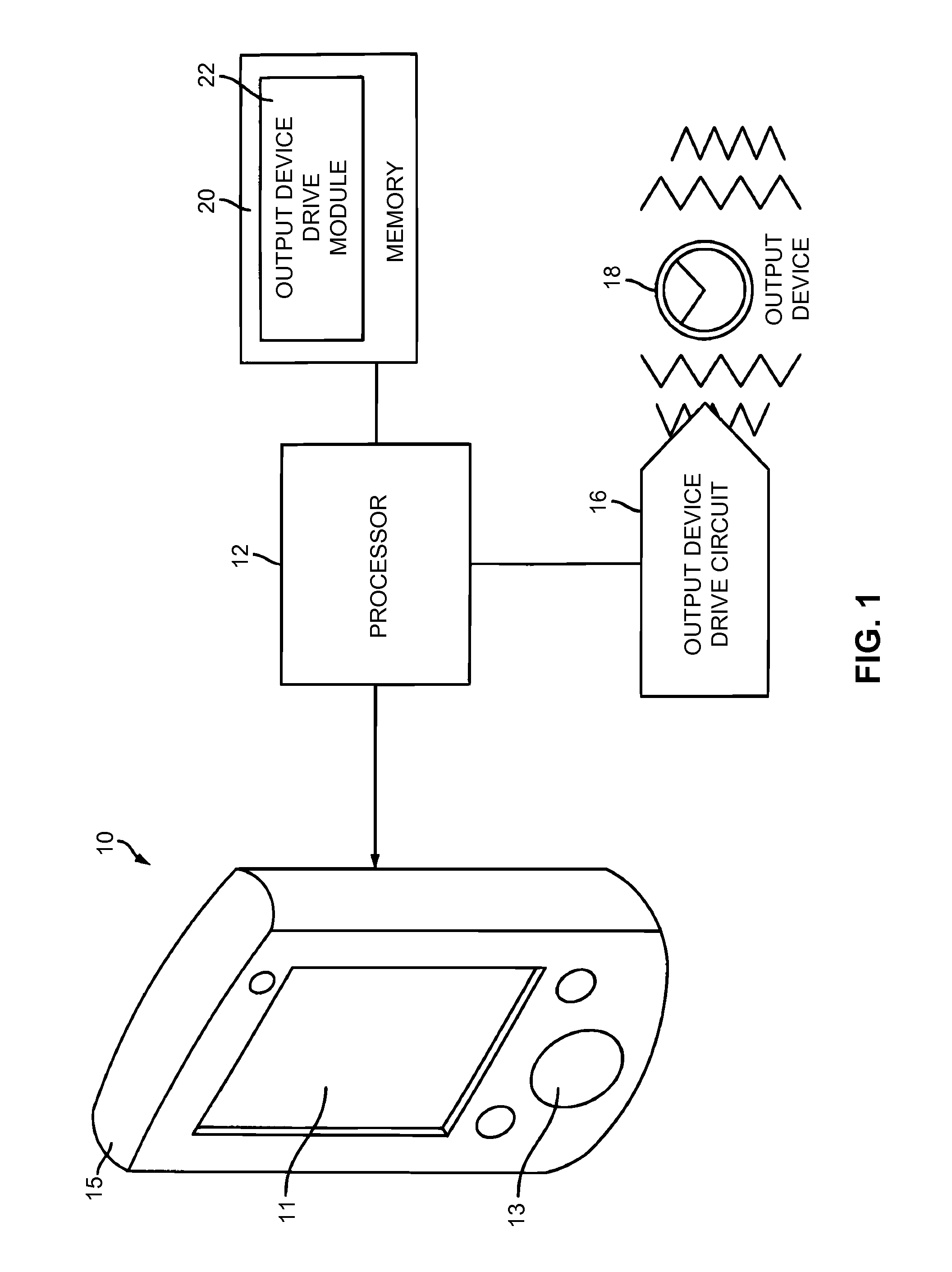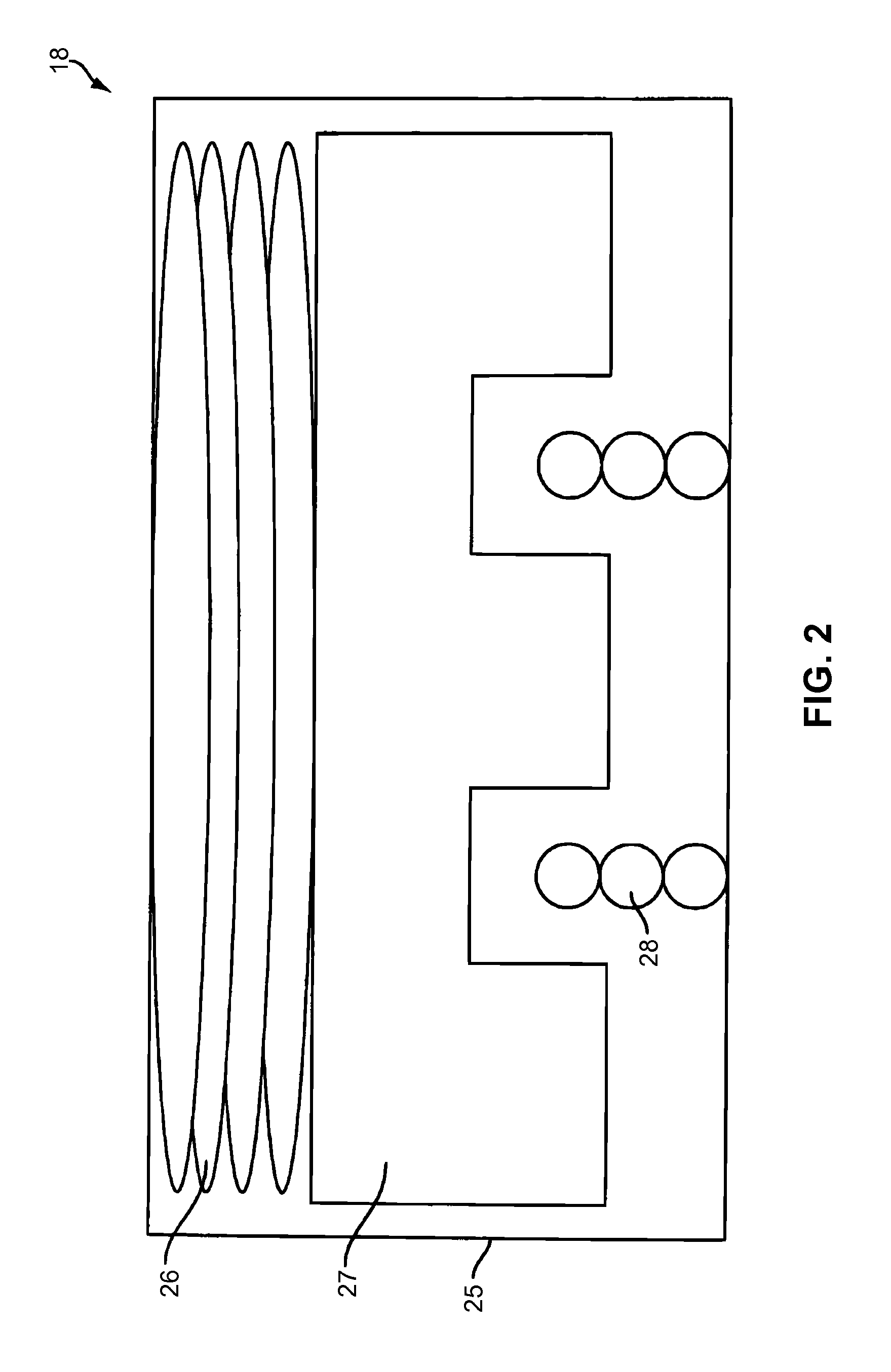Interactivity model for shared feedback on mobile devices
a mobile device and interaction model technology, applied in the field of user interface, can solve the problems of static and inconsistent, less compelling to the user, and the typical non-use of device sensor information in combination with gestures to produce haptic effects
- Summary
- Abstract
- Description
- Claims
- Application Information
AI Technical Summary
Problems solved by technology
Method used
Image
Examples
Embodiment Construction
[0023]As described below, a dynamic haptic effect refers to a haptic effect that evolves over time as it responds to one or more input parameters. Dynamic haptic effects are haptic or vibrotactile effects displayed on haptic devices to represent a change in state of a given input signal. The input signal can be a signal captured by sensors on the device with haptic feedback, such as position, acceleration, pressure, orientation, or proximity, or signals captured by other devices and sent to the haptic device to influence the generation of the haptic effect.
[0024]A dynamic effect signal can be any type of signal, but does not necessarily have to be complex. For example, a dynamic effect signal may be a simple sine wave that has some property such as phase, frequency, or amplitude that is changing over time or reacting in real time according to a mapping schema which maps an input parameter onto a changing property of the effect signal. An input parameter may be any type of input capa...
PUM
 Login to View More
Login to View More Abstract
Description
Claims
Application Information
 Login to View More
Login to View More - R&D
- Intellectual Property
- Life Sciences
- Materials
- Tech Scout
- Unparalleled Data Quality
- Higher Quality Content
- 60% Fewer Hallucinations
Browse by: Latest US Patents, China's latest patents, Technical Efficacy Thesaurus, Application Domain, Technology Topic, Popular Technical Reports.
© 2025 PatSnap. All rights reserved.Legal|Privacy policy|Modern Slavery Act Transparency Statement|Sitemap|About US| Contact US: help@patsnap.com



